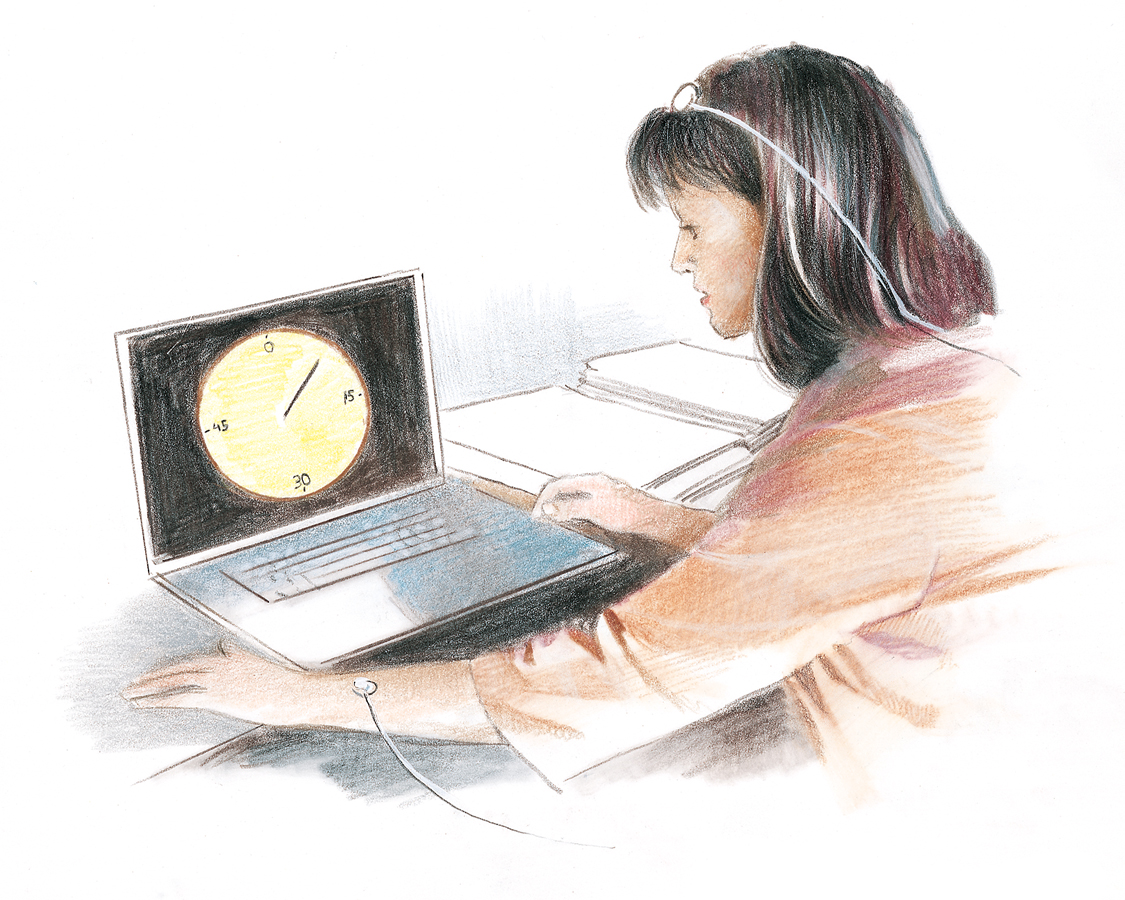
 Figure 3.4
Figure 3.4Is the brain ahead of the mind? In this study, volunteers watched a computer clock sweep through a full revolution every 2.56 seconds. They noted the time at which they decided to move their wrist. About one-third of a second before that decision, their brain-wave activity jumped, indicating a readiness potential to move. Watching a slow-motion replay, the researchers were able to predict when a person was about to decide to move (following which, the wrist did move) (Libet, 1985, 2004). Other researchers, however, question the clock measurement procedure (Miller et al., 2011).